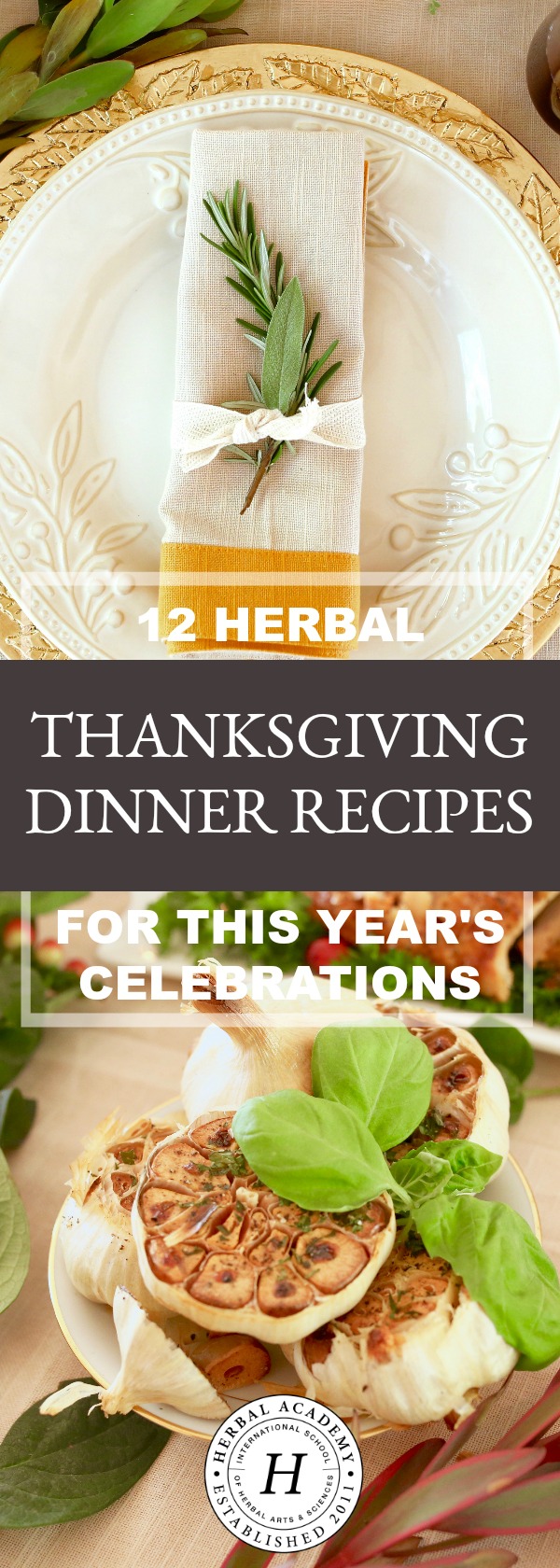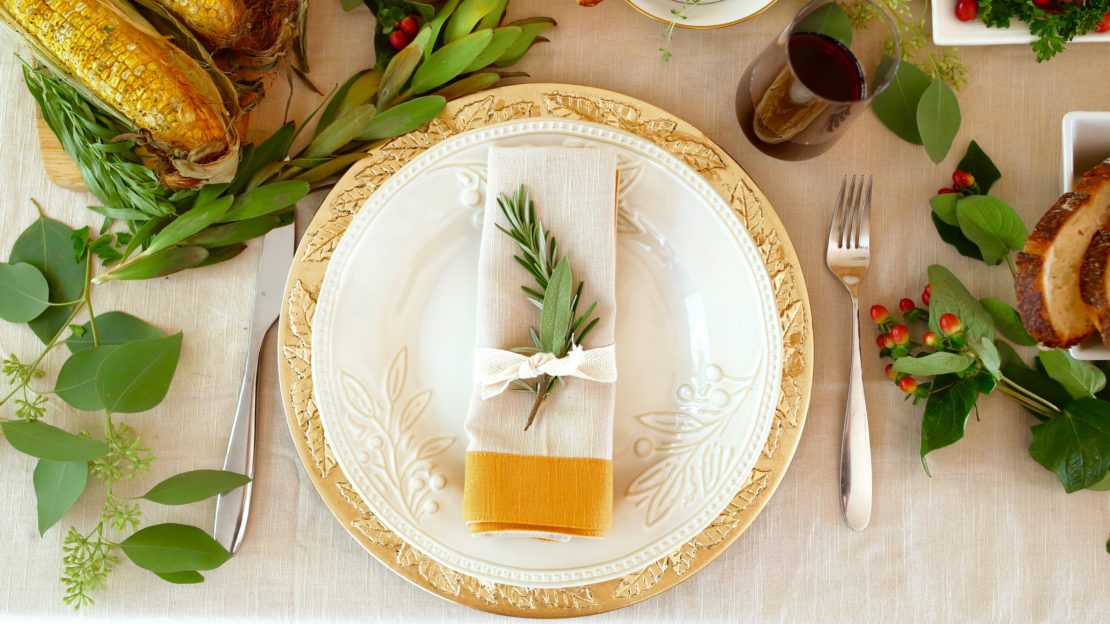
12 Herbal Thanksgiving Dinner Recipes For This Year’s Celebrations
Thanksgiving is just around the corner, and we’re all planning our big meals. If I asked you to name a few herbs or spices you might be using in your Thanksgiving recipes, sage and cinnamon would undoubtedly be at the top of the list. But there are many other herbs that can be used in creative ways to spice up your Thanksgiving Dinner this year.
Below I’ll share 17 common herbs that are often found in Thanksgiving dishes and a variety of delicious Thanksgiving food recipes that incorporate them!
17 Herbs Commonly Found In Thanksgiving Dishes
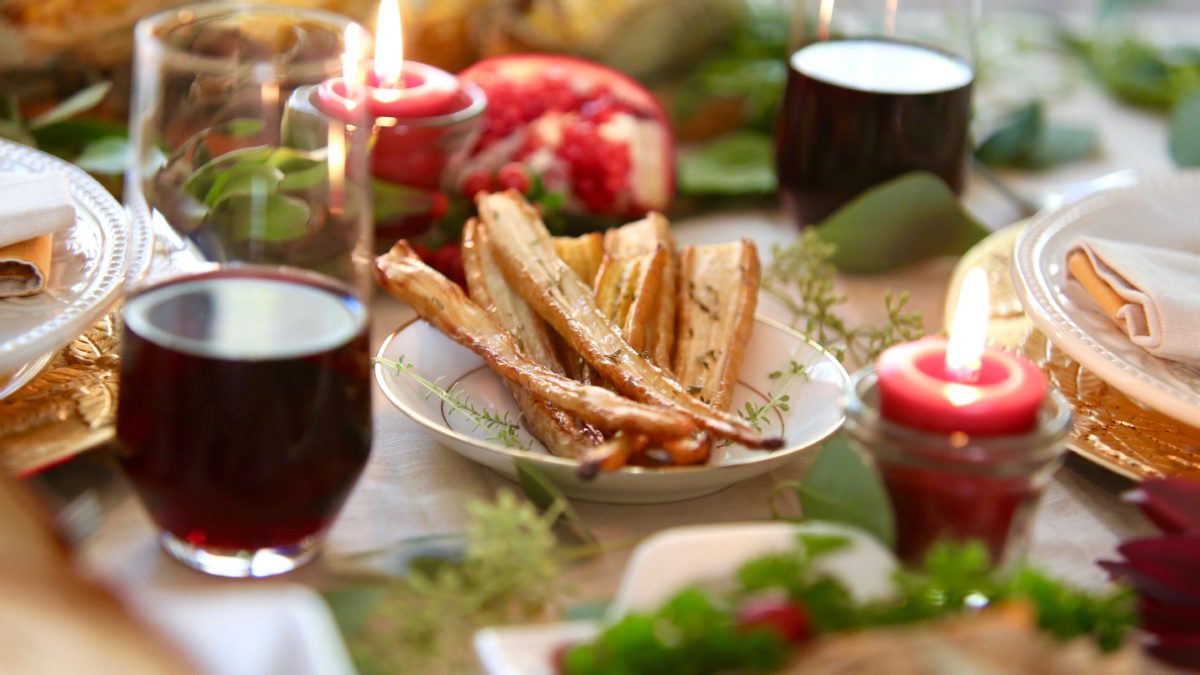
Herbs and spices are an integral part of the recipes we commonly associate with this time of year. The reasons for their use go beyond flavor to their other beneficial effects on the body, especially at Thanksgiving when overeating is easy.
The following is a list of 17 herbs that are commonly found in Thanksgiving dishes, and a brief note on their beneficial properties. Many of these herbs stimulate circulation in the digestive tract to build digestive warmth and stimulate the release of digestive enzymes and bile, increasing absorption of the nutrients. Due to their aromatic oil content, they act as carminatives to ease spasm and gas and soothe digestive discomforts. The bitter component contained in some of these herbs also promotes digestion and nutrient absorption.
1. Sage (Salvia officinalis)
Sage is an aromatic, bitter herb which stimulates digestion. It is used to soothe indigestion and gas and temper bad breath (Mars, 2007).
2. Parsley (Petroselinum crispum)
Parsley has been long known as an aid for bad breath, but it also is a nervine and good for digestion (Mars, 2007).
3. Rosemary (Rosmarinus officinalis)
“Rosemary for remembrance” is a common saying and the herb can be helpful for memory problems. It also improves circulation and digestion, and is tonic for the nervous system (Mars, 2007).
4. Thyme (Thymus vulgaris)
Thyme is a useful herb to add to the Thanksgiving meal. Not only is it antispasmodic, and therefore, helps with digestion, but it’s also antibacterial and antiseptic. It also relaxes the respiratory tract, which can help with coughs (Castleman, 2003).
5. Cinnamon (Cinnamomum aromaticum or C. zeylanicum)
It’s thought that cinnamon has been used since 2700 B.C. (Castleman, 2003). Cinnamon is warming, stimulates digestion, and is thought to be active against both staph and botulism bacteria (Mars, 2007).
6. Tarragon (Artemisia dracunculus)
The light taste of licorice-flavored tarragon is used as an appetite stimulant and aids digestion (Castleman, 2003), as it stimulates production of digestive juices.
7. Juniper Berries (Juniperus communis)
The bitter taste of juniper berries stimulates the release of digestive juices, aiding the digestive process (Kress, 2005).
8. Marjoram (Origanum majorana)
Known as a mild oregano, marjoram can assist with digestion, toothaches, and inflammation (Kowalchik, Hylton, & Carr, 1998).
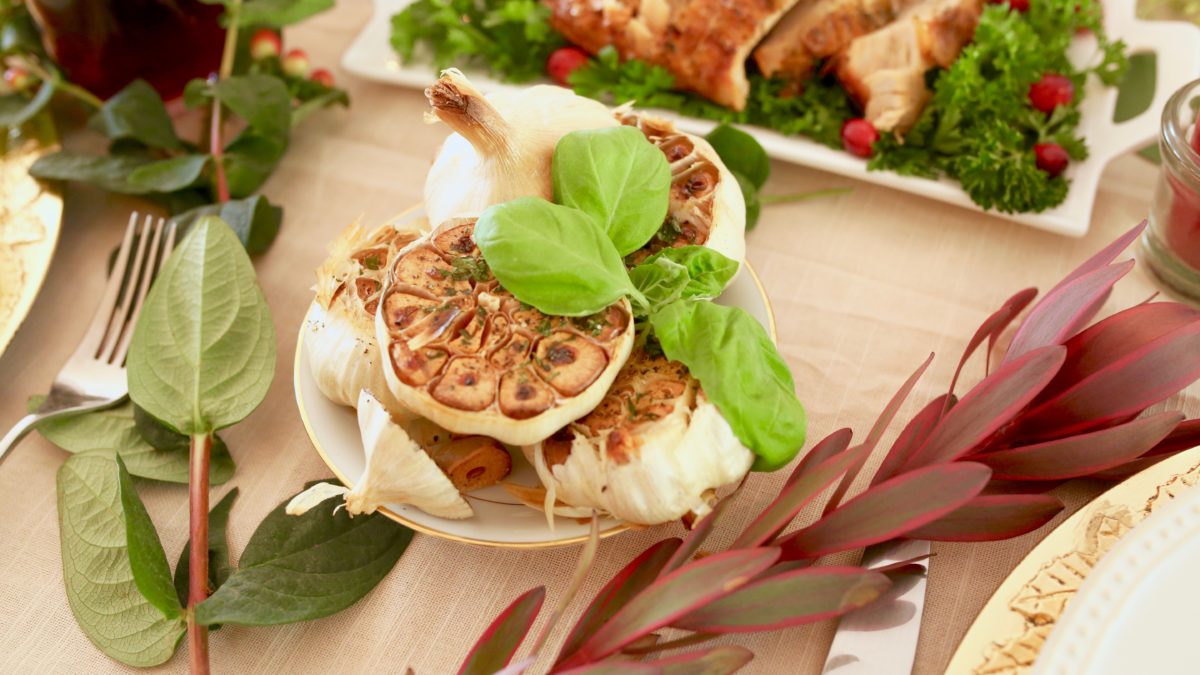
9. Savory (Satureja spp.)
Mostly used as a culinary herb today, savory has been used for minor stomach upsets in the past (Kowalchik, Hylton, & Carr, 1998).
10. Cloves (Syzygium aromaticum)
A warming spice, clove stimulates both circulation and digestion. It has been used with diarrhea and may be effective against Enterococcus coli (Mars, 2007).
11. Ginger (Zingiber officinale)
Ginger has long been known as the “go to” spice for nausea and motion sickness. Its warming, stimulating nature is also good for digestion and bloating. The dried plant is hotter than the fresh (Mars, 2007).
12. Allspice (Pimenta dioica)
Another warming spice, allspice has been used for poor appetite, indigestion, and gas (Mars, 2007).
13. Cardamom (Elettaria cardamomum)
A warming carminative, cardamom has been known for reducing stomach acidity, gas, and indigestion (Mars, 2007).
14. Coriander (Coriandrum sativum)
Coriander stimulates digestion and helps with bloating, poor digestion and appetite loss (Mars, 2007); while many of the herbs and spices listed here are warming carminatives, coriander is an example of a cooling carminative.
15. Nutmeg (Myristica fragrans)
Nutmeg seems to stimulate brain activity and circulation but has also been used for indigestion, insomnia, and muscle pain (Mars, 2007). Its warming, carminative actions and slight bitter taste aid digestion.
16. Bay Leaf (Laurus nobilis)
Bay leaf tonifies the digestive system, thereby aiding digestion and helping ease gas. It has been known to aid those with arthritis and may be of benefit when added to a bath for sore muscles (Mars, 2007).
17. Pepper (Piper nigrum)
Pepper is warming and stimulating and is known to improve circulation. It has also been used for arthritis, nausea, vertigo, and indigestion (Mars, 2007).
Herbal Thanksgiving Dinner Recipes To Try
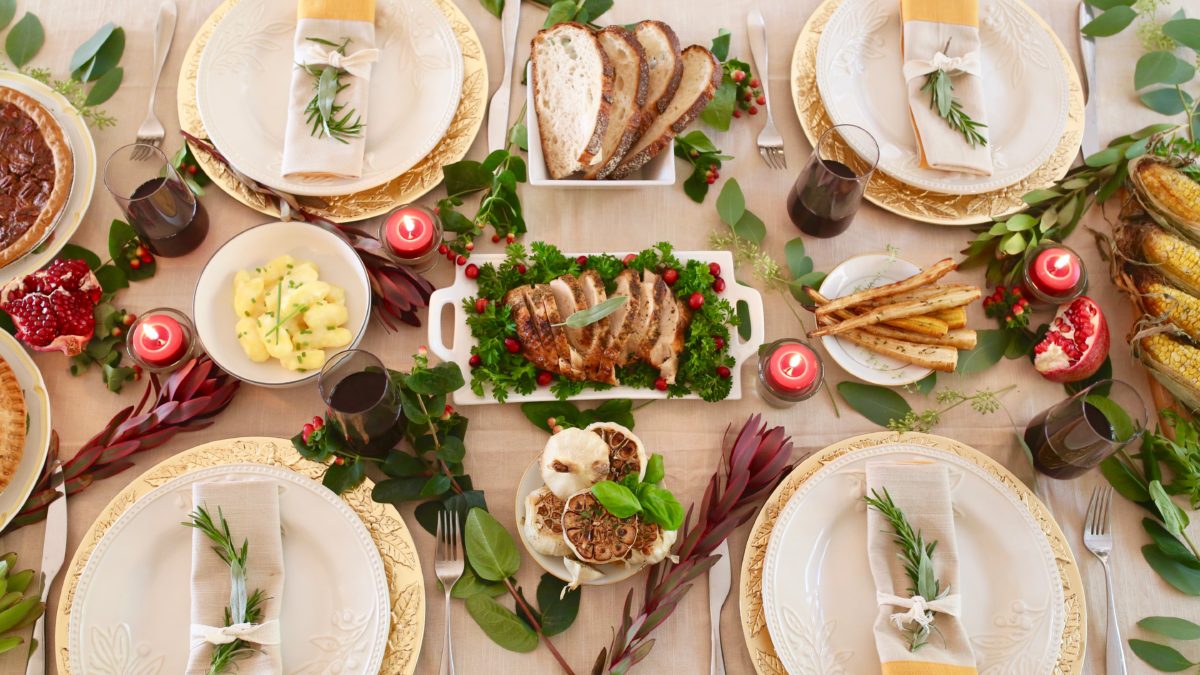
Thanksgiving dinner is often made up of traditional recipes that have been passed down from generation to generation, but if you’re looking to try something new or incorporate herbs into more of your meals, the following recipes can help you do just that. Here you’ll find several herbal Thanksgiving recipes that feature some of the herbs mentioned above.
Stuffing
Stuffing is a traditional savory side dish at most Thanksgiving dinners, whether you are using it to stuff a turkey or baking it separately. This recipe allows you to add more herbs if you would like to bump up the savory herbal flavor. We like the sage, thyme, and pepper combination, but feel free to use any extras from the list above.
¾ cup minced onion Brining turkeys has become popular around Wisconsin. Brining is done by adding your choice of herbs to salt and water. You place the whole bird in a large vessel (it must be completely covered) and add your herbs. The brine is like a marinade, and the turkey must sit in the water mixture for 24 hours before removing, rinsing (if you choose), and baking. Brining locks in the moisture of the bird and makes it juicy and more flavorful. I have found stabbing the meat of the bird a few times with a fork before putting it in the brine allows the flavor of the brine to better penetrate the meat.
Vegetable broth to cover the turkey 1 gallon water (or enough to cover the turkey) 1 gallon water (or enough to cover the turkey) Another popular alternative to the traditional baking is to use a savory herbal rub for the turkey. Rubs should be applied on and under the skin to make the turkey absorb them easier. If you make the rub a day in advance (stored in the refrigerator until ready to use), it allows the flavors to mix.Rubs can also double as a baste. After you have mixed the rub blend, divide it in two parts—one for the rub and one for the baste (this way during basting you won’t use the rub that has come into contact with raw poultry).
¼ cup olive oil 1 heaping tablespoon fresh rosemary, finely chopped If you would like to make your own poultry seasoning, here are a couple recipes to try. When using dried herbs, these recipes double and triple, if you would like to make a larger quantity to have on hand or give as gifts.. All rubs made with dried herbs can be stored in labeled, airtight containers.
2 ½ teaspoons dried sage 1 teaspoon dried sage So far, we have primarily used herbs for the savory part of our Thanksgiving dinner. Now onto the desserts and sides which are usually heavily flavored with warming, toasty spices like cinnamon, cloves, nutmeg, and cardamom.
Pumpkin Bread
While some of the beloved recipes in our family traditions were rather enthusiastic in their use of sugar and fat, enjoying them as a special treat for holidays is just fine. If you are looking to minimize sugar and oil, you may want to try this pumpkin bread recipe.
3 cups sugar Note: Sugar can be reduced to 2 cups, but this will slightly alter the texture of the bread.
A traditional Thanksgiving dessert is apple pie or pumpkin pie, and you can easily make your own spice combinations to use in holiday dessert recipes. All recipes can be adapted to your personal tastes and multiplied for bigger batches. You can make these in bulk and put them in cute jars to give as Christmas presents.
2 tablespoons ground cinnamon 3 tablespoons ground cinnamon 4 teaspoons ground cinnamon These ideas and recipes are just a place for you to begin experimenting with herbs and spices around the holidays. Feel free to make additions, deletions, or substitutions in any of these recipes to tweak them to your own preferences. Enjoy cooking with herbs and spices and getting the benefits they offer for our wellness, digestive and otherwise!
REFERENCES
Castleman, M. (2003). The new healing herbs: The classic guide to nature’s best medicines featuring the top 100 time-tested herbs. Dingley, VIC: Hinkler Books.
Mars, B. (2007). The desktop guide to herbal medicine: The ultimate multidisciplinary reference to the amazing realm of healing plants, in a quick-study, one-stop guide. Columbus, OH: Basic Health Publications, Inc.
Kowalchik, C., Hylton, W., & Carr, A. (1998). Rodales illustrated encyclopedia of herbs. Emmaus, PA: Rodale Press.
Kress, H. (2005). Using juniper berries. Retrieved from https://www.henriettes-herb.com/blog/using-juniper-berries.html
Basic Bread Stuffing
1 ½ cups chopped celery
1 cup butter
9 cups soft bread pieces ripped up into small pieces (about an inch square)
2 teaspoons salt
1 ½ teaspoon crushed sage leaves
1 teaspoon thyme
½ teaspoon pepper
Brines
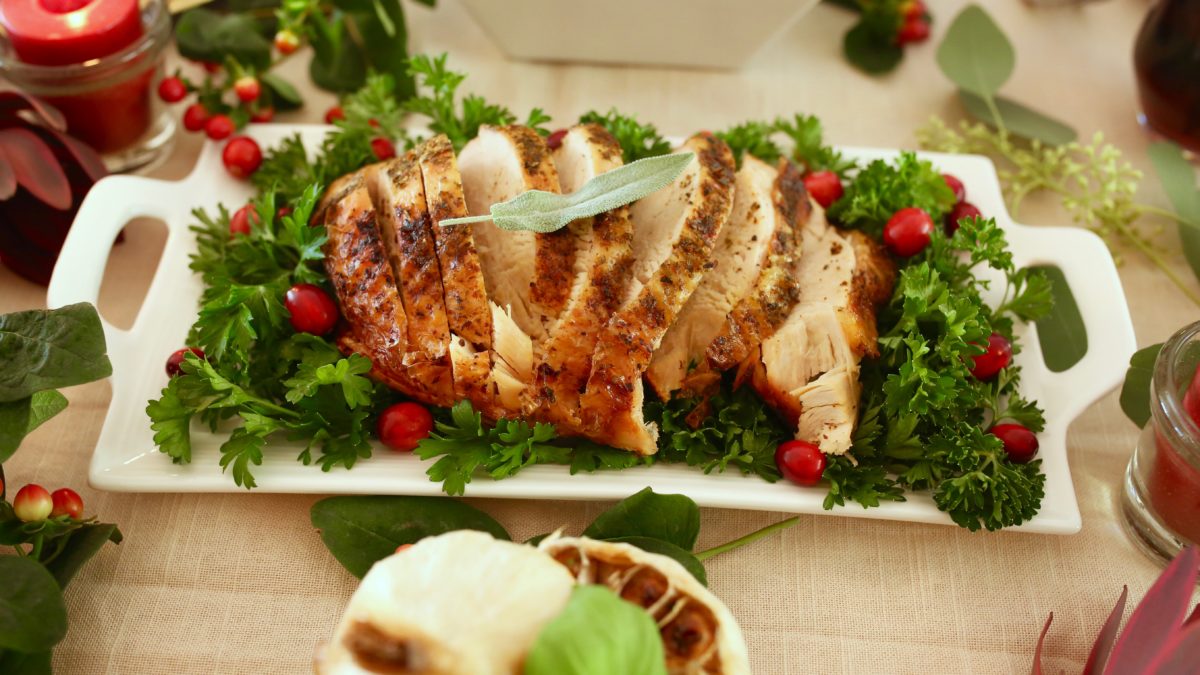
Basic Turkey Brine (Garfunkel Four)
1 cup sea salt (any salt will do)
2 tablespoons dried parsley (I use Italian flat leaf parsley since I feel it is more flavorful)
2 tablespoons dried sage
2 tablespoons dried rosemary
2 tablespoon dried thyme
Juniper Berry Brine
7 dried bay leaves
3 tablespoons dried juniper berries
1 ½ cups coarse salt
2 tablespoons coriander seeds
2 tablespoons peppercorns
1 bottle of the white wine of your choice (example: White Zinfandel Riesling)
Allium Brine
1 ½ cups sea salt (any salt will do)
3 medium onions (any color you prefer)
10 garlic cloves (more if you like garlic, less if you don’t)
1 or 2 bunches (as your taste buds dictate) of one of the following: fresh thyme, parsley, rosemary, savory, or sage
Rubs
Dried Herb Rub
1 teaspoon. dried thyme
1 teaspoon dried rosemary
1 teaspoon salt
1 teaspoon. ground black pepper
1 teaspoon. dried tarragon
1 medium onion and 1 quartered lemon (optional—for inside of bird’s cavities)
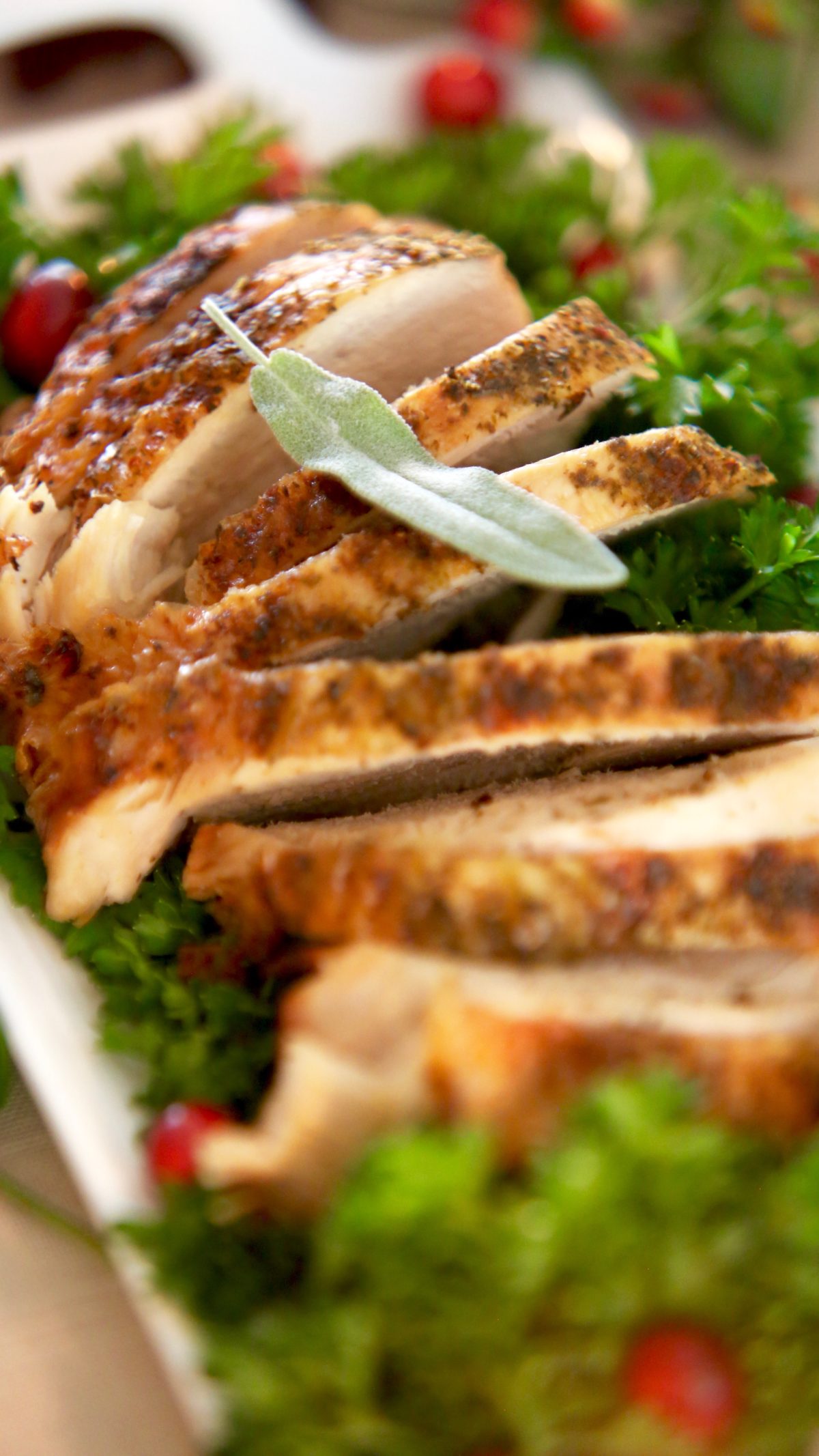
Fresh Herb Rub
1 heaping tablespoon fresh thyme, finely chopped
1 heaping tablespoon minced garlic
1 heaping tablespoon minced onion
2 teaspoons fresh sage, finely chopped
3 teaspoons salt (your choice)
⅓ cup olive oil
1 tablespoon any white wine
1 tablespoon Worcestershire sauce
Poultry Seasoning
Poultry Seasoning #1
1 ½ teaspoons dried thyme
1 teaspoon dried marjoram
1/2 teaspoon dried rosemary
¼ teaspoon dried nutmeg
1 teaspoon dried pepper
Basic Poultry Seasoning #2
½ teaspoon dried thyme
¾ teaspoon dried pepper
Dash of clove (optional)
Desserts
Pumpkin Bread
1 cup oil
4 eggs (2 at a time)
2 cups pumpkin
3 ½ cups flour
2 teaspoons baking soda
½ teaspoon baking powder
1 teaspoon ground cinnamon
1 teaspoon ground nutmeg
1 teaspoon salt
¼ teaspoon ground cloves
DIY Apple Pie Seasoning
1 tablespoons ground nutmeg
1 ½ teaspoons ground allspice
1 ½ teaspoons ground cardamom
DIY Pumpkin Pie Seasoning #1
2 ½ teaspoons ground ginger
2 teaspoons ground allspice
1 teaspoon ground nutmeg
1 ½ teaspoon ground cloves
DIY Pumpkin Pie Seasoning #2
2 ½ teaspoons ground ginger
1 ½ teaspoons ground cloves
½ teaspoon ground nutmeg
